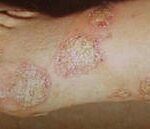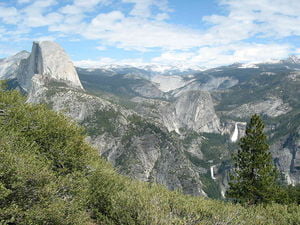Psoriasis is a chronic skin disorder that affects over 7 million people in the US. It strikes both men and women in equal numbers, and the average age of onset is 27, although it occurs in young children in a small percentage of cases. While its main symptoms are thickened, scaly skin, psoriasis is now understood to be more systemic in nature. Those suffering from psoriasis may have an increased risk of several other diseases including arthritis, cardiovascular disease, cancer, Crohn’s disease, diabetes and depression.
Psoriasis Causes
Psoriasis is not contagious, but tends to run in families, indicating that there is a genetic factor involved.
The main cause of psoriasis symptoms is an excessively rapid proliferation of skin cells, which divide up to 1,000 times faster than normal. What causes these cells to divide so fast? The rate of cell reproduction is regulated by two biochemical compounds, known as cGMP and cAMP. If cGMP levels are high, cells will divide faster, while high cAMP levels slow down cell division. Individuals with psoriasis have both high cGMP and low cAMP levels, causing the cells to replicate abnormally fast.
A factor associated with psoriasis is the incomplete digestion or absorption of protein. This can lead to an accumulation in the intestine of amino acids and polypeptides (components of proteins). When these substances build up in the gut, they are transformed by intestinal bacteria into toxic substances called polyamines, which inhibit cAMP.
Other toxins in the intestine, such as endotoxins, can cause increased levels of cGMP, further contributing to an unfavorable ratio of cGMP to cAMP. An overgrowth of the yeast Candida albicans in the intestine is also implicated as a cause of psoriasis.
Since the main role of the liver is to cleanse the blood of toxins, impaired liver function can play a role in psoriasis. Alcohol consumption can make the problem worse.
Psoriasis Symptoms
The primary symptom of psoriasis is thickened, scaly patches on the skin, frequently seen on the scalp, wrists, knees, elbows, ankles or on places that have received trauma. Since the skin cells replicate so fast, they pile up in certain areas, causing a shiny, scaly appearance. The patches or lesions can appear as simple pink or red areas of dry skin, bumps, raised plaques, large white flakes, or blisters. Psoriasis also sometimes affects the nails, causing small pits or depressions, and may be mistaken for nail fungus.
Psoriatic arthritis occurs in 10-35 percent of those with psoriasis. The symptoms are inflammation and pain of the joints, most often in the ankles, knees and hands. Psoriatic arthritis usually occurs after the appearance of skin conditions, although in some cases, the only symptoms are painful joints, without any skin lesions.
Psoriasis Triggers and Risk Factors
Certain things can trigger or aggravate psoriasis symptoms. They include:
* Cold weather
* Smoking
* Weight gain, especially in women
* Stress
* Injury to the skin
* Infections, such as strep throat
* Some prescription medications, including beta blockers and lithium
Sources:
Murray, Michael and Pizzorno, Joseph. Encyclopedia of Natural Medicine. Three Rivers Press, 1998.
http://www.medicinenet.com/psoriasis/article.htm
http://www.webmd.com/skin-problems-and-treatments/psoriasis/default.htm




